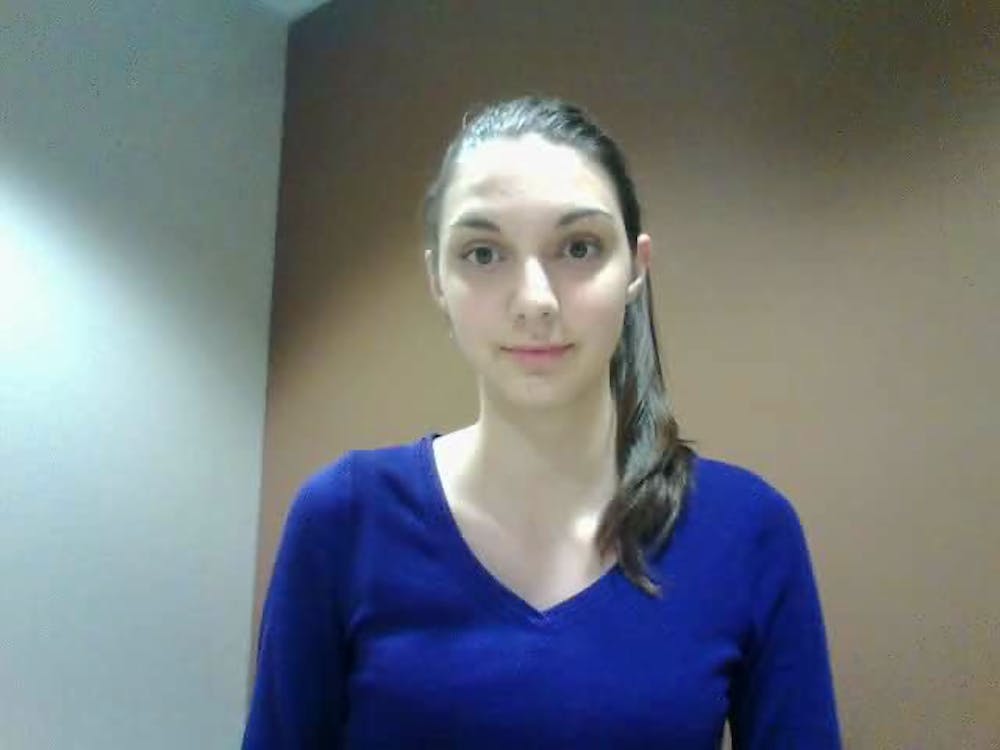Sara Homko leaned on the counter across from her mother, her long legs stretched out in front of her. She turned to her mother Lynne expectantly, and, after receiving a nod, told me I could begin the interview. I was careful to look at Sara’s mother directly to ask the question. Then, I turned to Sara and watched as she spoke and signed definitively, speaking to her mother in a language foreign to both my eyes and ears.
Homko, a sophomore early childhood education major from Medina, Ohio, is fluent in two languages: English and American Sign Language.
ASL is the language the deaf community uses in the U.S. Just like spoken languages have different variations within cultures and between cultures, ASL is its own language with different rules for pronunciation, word order and grammar that are distinct from American English. As an early childhood education major with an intervention concentration, Homko hopes to use her knowledge of ASL to help the children in her classroom.
Homko learned sign language by watching her parents communicate with others. Her parents taught her simple words like “mom” and “dad,” and she watched VHS tapes that taught ASL to young children. Professional ASL interpreters spend years studying the language to become fluent. Her mother said Homko acquired most of her knowledge of sign language through simply watching and repeating what she saw.
What drives Homko to help hearing impaired students is personal and close to her heart. Both of her parents are deaf, so she and her siblings have grown up learning to use their hands, eyes and ears to communicate.
“I would teach ASL to a class of all hearing students,” Homko said. “I want to teach them to connect with other students that have trouble communicating.”
Her mother said her daughter has “always made the extra effort to connect with people” instead of only communicating.
Kate Barrett, a sophomore allied health major and Homko’s roommate, said there was a time when they went to the mall and a boy came over to them at the food court. “She started talking to him and joking with him. He loved it.”
Victoria Frisch, adviser of the Otterbein Deaf Culture Club, recognizes and admires Homko’s passion for ASL. “She is very involved in the Deaf community,” Frisch said.
Homko is a member of the Otterbein Deaf Culture Club and is an ASL tutor for Otterbein students.
The club promotes deaf culture and deaf awareness at Otterbein and in the community. Members interact regularly with Columbus Colony Housing’s independent living facility for deaf residents, which allows students to practice ASL. Current president Doug Smith said in an email that students like to apply what they’ve learned in classes, and both students and residents enjoy the opportunity to communicate.
When her family goes out to eat, Homko and her two siblings often act as interpreters for their parents. While their parents can read the waiter’s lips, Homko translates and orders for her mother and father to make sure the communication is clear.
“It’s become the norm for us,” Homko said. “I don’t find it awkward or weird at all. I just want to be sure both my parents and the waiter can understand each other.”
Lynne Homko visibly lit up when she spoke of what will make her daughter a good teacher. She turned to her daughter and began signing definitively. “She’s wanted to be a teacher since second grade,” Lynne Homko said. She told her daughter to recount a funny story about Homko’s young aspirations.
Homko recalled how she made a seating chart for her teacher and even had the second-grade gall to hand it to her teacher and recommend that she use it. “Of course, I put my best friend right next to me,” she said.
Fellow education major sophomore Stephanie Zimdars said Homko will be right at home with her intervention concentration, which will allow her to work with children who have disabilities. “She is patient and has a deep love for helping kids, especially those who might not be up to speed in the classroom,” Zimdars said. “She loves to help kids in any way she can.”
Homko said that one of the benefits of having deaf parents is being able to sing in the shower and play the piano late at night without worrying about waking anyone up. Does she worry about waking her hearing siblings?
“Nope,” Homko said with a laugh. “They can deal with it.”
Bridgette Wheeler contributed to this story.








